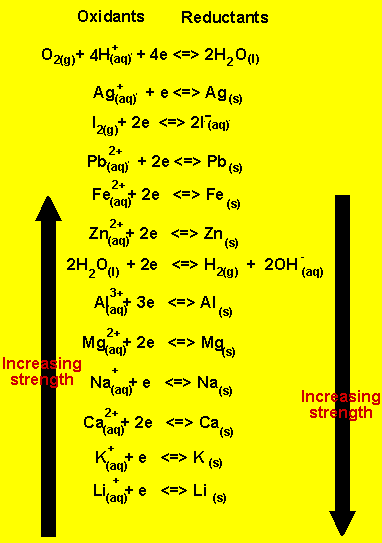Electrolysis
in solutions exercises solution 2
Students should be aware that oxidation (the loss of electrons) occurs at the anode and reduction (the gain of electrons) occurs at the cathode.
2) A solution
of lead(II)iodide is electrolysed.
a) What are the products formed at the cathode and at the anode?
b) Give the reactions that
occur at the anode and at the cathode.
Use the reactivity series on the right.
Looking at the electrochemical
series on the right we see that lead(II) ion is the strongest oxidant
present. So lead will be deposited at the cathode according to the equation
below.
Pb2+(aq)+ 2e => Pb(s)
The strongest reductant
present is I- .
2I -(aq)=> I2
(aq) + 2e
